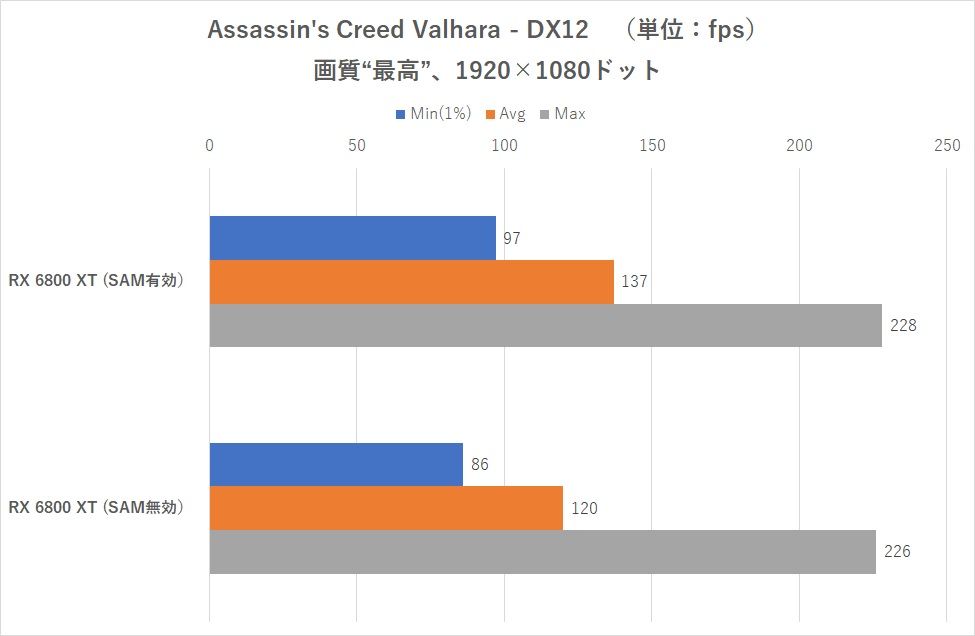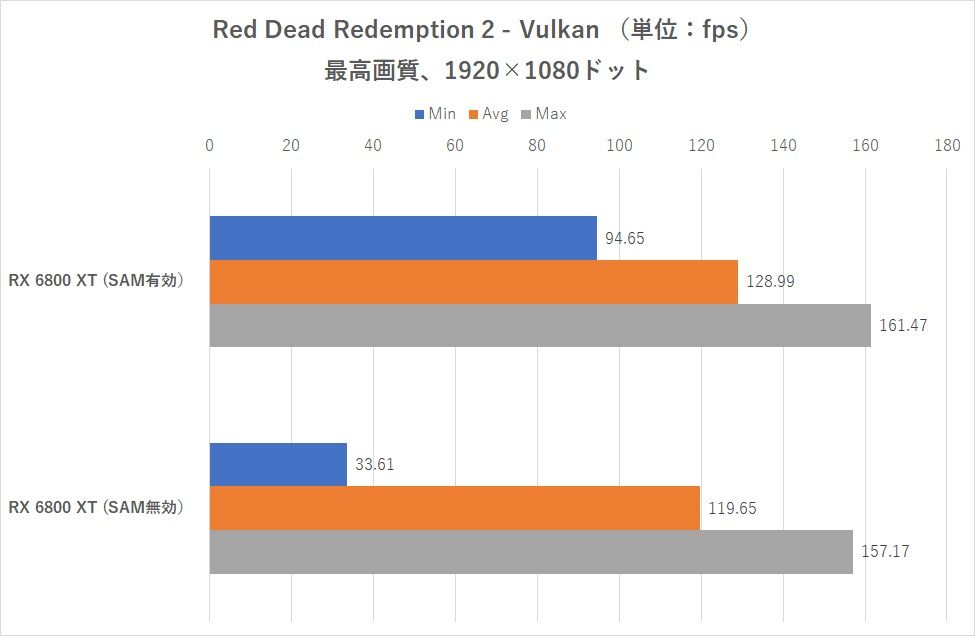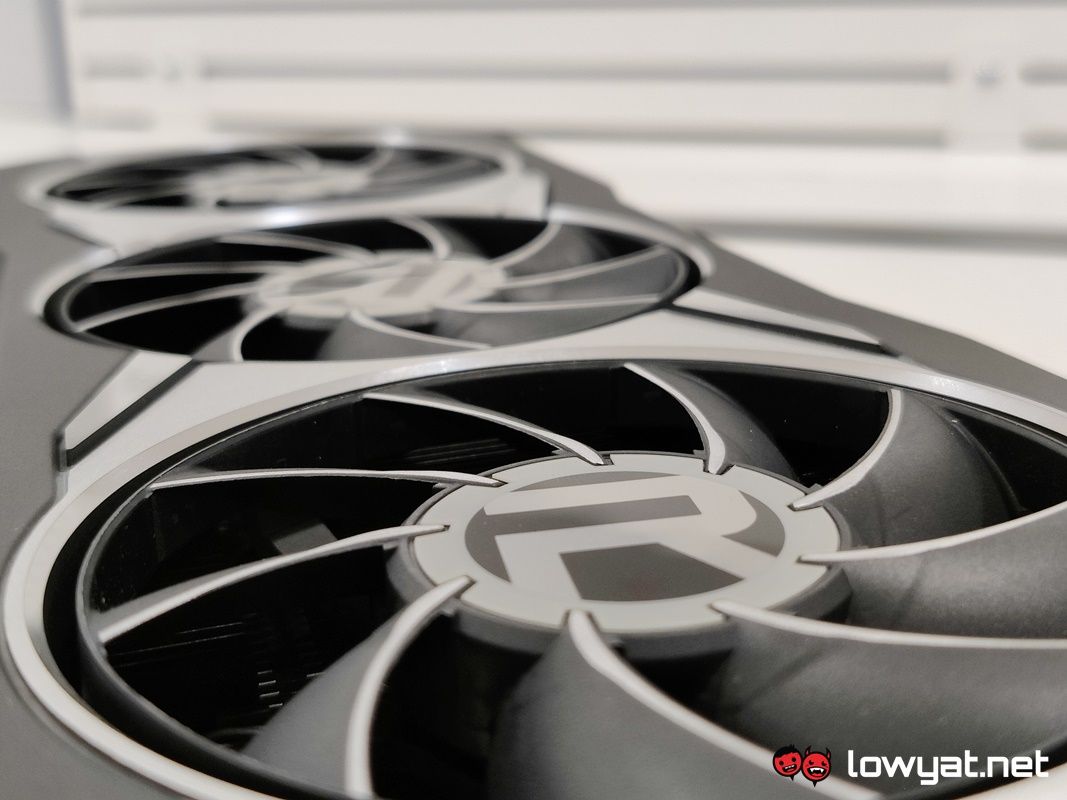The Z490 motherboard used in this instance was an ASUS ROG Maximus XII Extreme, while the CPU was Intel’s Core i9-10900K, since the recent firmware update for the board gives access to a “Re-Size BAR” option. Additionally, the site tested the 6800XT with the BAR feature turned on, as well as turned off. Finally, they used four titles that it believed that “SAM” has proven to improve performance: Assassin’s Creed Valhalla, Forza Horizon 4, Red Dead Redemption 2, and Rainbow Six Siege. Ultimately, ASCII noted that all four games definitely showed an increase in framerate while “SAM” was turned on, with Red Dead Redemption 2’s minimum framerate displaying the most dramatic improvement of nearly triple the frame count with SAM disabled.
For Assassin’s Creed Valhalla, the increase in its minimum framerate was more meagre at less than 10 fps with SAM turned on, while its average framerate saw an increment of approximately 10%. To be clear, SAM is far from being an exclusive feature and the technology itself has actually existed since the 2nd generation of the PCIe interface. Also, as pointed out by Videocardz, the feature rarely saw expanded use by people outside of the Linux or server communities. To that end, even NVIDIA has confirmed that it is currently developing a similar feature for its own GeForce graphics cards.
Besides AMD’s Ryzen 5000 series CPUs and AM4 chipset, there are some motherboards that already offer this option, though a function listed as “Re-Size BAR” Support, short of Resizable Base Address Register. Which is exactly what the Japanese tech site, ASCII, used. (Source: ASCII via Videocardz)


